Five ways OTAs should assess payment service providers
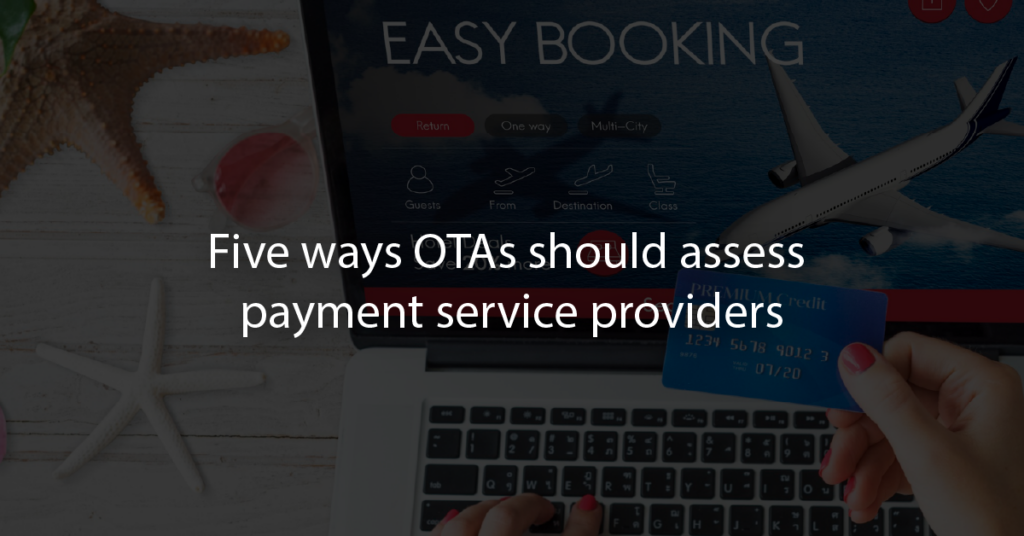
Unlike what was the norm a decade ago, online travel businesses like OTAs had to depend upon banks to process their payments. Things have drastically changed now that we have so many PSPs (, aka payment service providers), that OTAs have to do due diligence to pick one, and it has become one of the most important decisions they have to make. As an OTA, you know you are an international business. Cross-border payments make things complex for you. But you cannot simply go with a PSP that provides the smoothest UX. When choosing a PSP, the biggest job is to protect your margins. What are other factors that you must assess before taking a final call? We are going to discuss all of that in this piece. We will not be naming PSPs because what goes with your existing tech stack varies. So, we will cover everything you must expect from your payment service provider. Diverse Payment OptionsOnce the be-all and end-all of all financial transactions, traditional bank transfers are less efficient than the many contemporary alternatives. As such, PSPs embrace innovative technologies and offer diverse payment options. Payment technology has evolved in tandem with the rise of online and mobile commerce. Neglecting the preferences of your customers and suppliers can significantly limit your market reach. Particularly if your OTA maintains diverse international relationships, it’s imperative to collaborate with a PSP that aligns with regional requirements. At a minimum, a robust card strategy is essential. Also, your PSP should offer almost all loan payment options. These methods are often favored in specific regions or countries, such as AliPay in China, Paypal in North America, E-wallets, or digital wallets, now integral to the payment landscape, so your PSP must offer them. Read More – Setting legacy code objectives for OTAsGlobal Scalability and CoverageFor an international OTA, managing cross-border payments is an inherent challenge. It’s imperative to ascertain the countries a PSP serves, its approach to facilitating cross-border transactions, its network affiliations, and its licenses. Your PSP must have a comprehensive network of licenses, strategic partnerships, and banking relationships. This infrastructure enables seamless money transfers across over 190 countries and through 65 real-time corridors. Currency Flexibility PSPs must demonstrate adaptability in processing multiple currencies, a prerequisite for facilitating cross-border trade. It’s essential to consider the currencies pertinent to your current operations and those your business may require as it expands globally. Opt for providers that support a broad spectrum of currencies, ensuring your present and future needs are well accommodated.Security Assurance The digital payment ecosystem is also filled with opportunities for fraud, so the security of payments assumes paramount significance. You must ensure the chosen payment system adheres to industry certification standards and deploys robust end-to-end encryption. Pay special attention to compliance with the Payment Card Industry Data Security Standard (PCI DSS) to protect sensitive cardholder data. Tech Architecture CompatibilityAs you know, tech architecture compatibility has various facets, including onboarding, system integration, and ongoing support. Your collaboration with a PSP should guarantee top-tier service across these domains, offering swift onboarding, streamlined development processes, and comprehensive ongoing support. Ideally, seek providers offering a REST API for maximum flexibility and control. Providers should enable you to construct global payment solutions via a RESTful methodology, ensuring straightforward integration, scalability, and platform reliability. As you know, tech architecture compatibility has various facets, including onboarding, system integration, and ongoing support. Your collaboration with a PSP should guarantee top-tier service across these domains, offering swift onboarding, streamlined development processes, and comprehensive ongoing support. Ideally, seek providers offering a REST API for maximum flexibility and control. Providers should enable you to construct global payment solutions via a RESTful methodology, ensuring straightforward integration, scalability, and platform reliability. Vervotech is a leading Hotel Mapping and Room Mapping API that leverages the power of AI and ML to quickly and accurately identify each property listing through the verification of multiple parameters. With One of the industry’s best coverage of 98% and an accuracy of 99.999%, Vervotech is quickly becoming the mapping software of choice for all leading global companies operating in the travel and hospitality industry. To learn more about Vervotech and the ways it can enhance your business in the long run contact us: sales@vervotech.com
Decluttering PCI DSS compliance prerequisites for OTAs
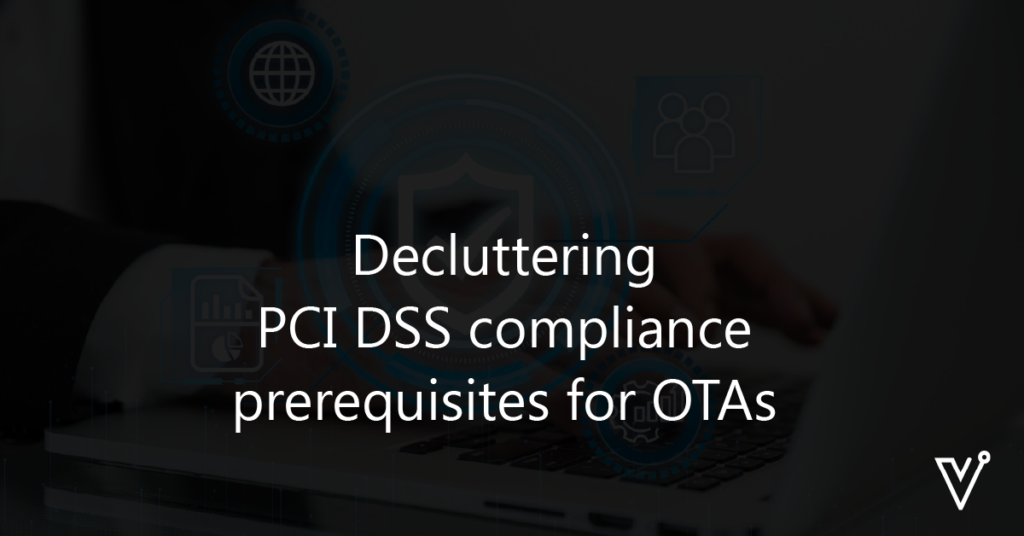
More than 75% of sales of travel products happen online. If you are setting up payment infrastructure for your newly built online travel agency or thinking of moving your existing travel agency online, the first thing that should draw your attention is PCI DSS compliance. It applies to the smallest travel companies, and non-compliance could lead to heavy fines from payment processors, which go as high as 100,000 USD a month. Apart from dodging fines, why is it important? What do you need to do from your end? We will answer all these questions in this piece for you. Let’s get to the basics first. PCI DSS stands for Payment Card Industry Data Security Standard, and it’s essentially a set of security guidelines designed to protect the sensitive payment information of your customers. Now, why is this relevant to OTAs? Essentially, PCI DSS compliance is all about safeguarding your customers’ financial data. When travelers book flights, hotels, or other services through your OTA, they trust you to keep their credit card information safe. Meeting PCI DSS requirements means you’re taking the necessary steps to ensure this trust is well-placed. To become PCI DSS compliant, you’ll need to implement specific security measures and practices, such as encryption, access controls, and regular security assessments. It might seem like a hassle, but it’s a vital investment in both your business’s reputation and your customers’ peace of mind. Now comes the question of what you must do to remain PCI compliant. Let’s address this next! Read More – Effective strategies for OTAs to optimize conversionsPCI DSS stands for Payment Card Industry Data Security Standard, and it’s essentially a set of security guidelines designed to protect the sensitive payment information of your customers. Now, why is this relevant to OTAs? Essentially, PCI DSS compliance is all about safeguarding your customers’ financial data. When travelers book flights, hotels, or other services through your OTA, they trust you to keep their credit card information safe. Meeting PCI DSS requirements means you’re taking the necessary steps to ensure this trust is well-placed. To become PCI DSS compliant, you’ll need to implement specific security measures and practices, such as encryption, access controls, and regular security assessments. It might seem like a hassle, but it’s a vital investment in both your business’s reputation and your customers’ peace of mind. Now comes the question of what you must do to remain PCI compliant. Let’s address this next! Level 1: This is the most stringent and typically applies to the largest travel agencies. If your agency processes more than six million transactions per year, you fall into this category. Visa: Visa, for instance, specifies businesses that process over six million Visa transactions annually as Level 1. Compliance involves robust security measures and an annual onsite security assessment. Mastercard: Similarly, Mastercard classifies Level 1 merchants as those with over six million Mastercard transactions annually. Compliance with Mastercard’s requirements includes stringent security controls and regular vulnerability assessments. Discover: Discover follows a similar model, designating Level 1 merchants as those with over six million Discover transactions each year. Compliance involves secure network and application development, access control, and regular security scans. American Express: American Express, too, categorizes Level 1 merchants as those processing over six million transactions. Compliance with American Express requires specific data protection, encryption, and access control measures. Level 2: Travel agencies that process between one million and six million transactions annually fall under this category. Visa, Mastercard, Discover, and American Express: Level 2 compliance applies to agencies within the one to six million transactions range for these companies. It involves stringent security controls, vulnerability assessments, and annual self-assessment questionnaires (SAQ). Level 3: If your agency processes between 20,000 and one million transactions annually, you fall into the Level 3 category. Visa, Mastercard, Discover, and American Express: The compliance requirements for these companies in Level 3 are similar and include ongoing monitoring, security assessments, and annual SAQs to protect payment data. Level 4: The smaller travel agencies, processing fewer than 20,000 transactions each year, are categorized under this level. While the requirements are less stringent than the others, compliance remains critical. Visa, Mastercard, Discover, and American Express: For Level 4, these companies maintain similar compliance requirements, including annual SAQs and regular security scans. JCB: Besides Visa, Mastercard, Discover, and American Express, it’s essential to consider JCB. JCB simplifies compliance into two merchant levels, where Level 1 applies to merchants processing over one million transactions annually, and Level 2 applies to those processing fewer than one million transactions. Specific requirements may include encryption, secure payment processing, and security assessments.The Payment Card Industry Data Security Standard (PCI DSS) outlines a set of security requirements and best practices for organizations that handle credit card transactions. There are 12 key requirements within the PCI DSS framework. 1. Install and Maintain a Firewall Configuration to Protect Cardholder Data: Establish and maintain a firewall and router configuration to protect cardholder data. 2. Do Not Use Vendor-Supplied Defaults for System Passwords and Other Security Parameters: Change default passwords and security settings for all systems and software. 3. Protect Cardholder Data: Protect stored cardholder data through encryption and other security measures. Mask PAN (Primary Account Number) data when displayed. 4. Encrypt Transmission of Cardholder Data Across Open, Public Networks: Use strong encryption and security protocols to protect cardholder data during transmission over open or public networks. 5. Use and Regularly Update Anti-Virus Software or Programs: Deploy anti-virus software on all systems commonly affected by malware and keep it current. 6. Develop and Maintain Secure Systems and Applications: Ensure all systems and software are developed and maintained securely, addressing vulnerabilities and security flaws. 7. Restrict Access to Cardholder Data by Business Need to Know: Limit access to cardholder data to only those who need it to perform their job duties. 8. Assign a Unique ID to Each Person with Computer Access: Assign a unique user ID to each individual with access to computer systems and implement robust authentication methods. 9. Restrict Physical Access
Predictive market intelligence: A secret weapon for online travel agencies
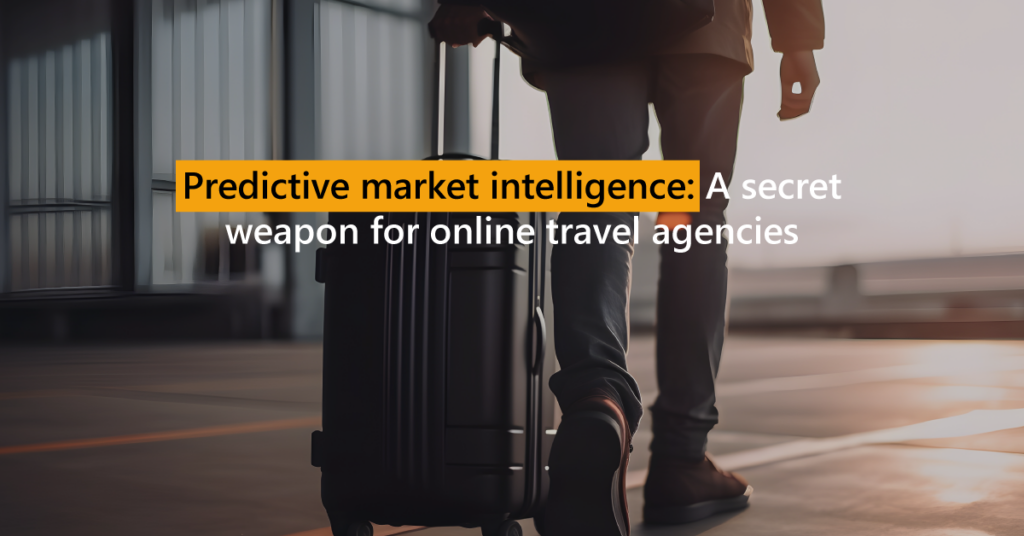
As an online travel agency, you always look for ways to pep competition. And in today’s fast-paced digital world, it means leveraging the latest technologies to gain a competitive edge. That’s where predictive market intelligence comes in. Using advanced algorithms to analyze data and identify patterns, predictive market intelligence systems can help online travel agencies anticipate demand, optimize pricing, and personalize the customer experience. Here in this piece, we outline five crucial benefits of using predictive market intelligence in the travel industry. Five Benefits of Predictive Market Intelligence for Online Travel Agencies Predictive market intelligence as a solution offers OTAs access to real-time data on customer intent, behavior, and the market as a whole. The data can potentially be translated into revenues and hedging slowdowns. Let’s look at some key benefits of PMA in online travel. Benefit #1: Anticipating Demand and Adjusting Pricing Average airfare changes over 60 times before a flight’s departure date. That’s because airlines are constantly adjusting prices in response to demand. And online travel agencies do the same for applying markups, thanks to predictive market intelligence. These systems can predict future demand and modify pricing by analyzing historical data on booking trends, weather patterns, and other factors. In fact, a study by Mckinsey found that dynamic pricing can increase revenue by up to 5%. Benefit #2: Optimizing Marketing Campaigns In the highly competitive world of online travel, marketing is vital to drive growth consistently and sustainably. Predictive market intelligence can help you optimize your marketing campaigns by identifying the most effective channels and messages. For example, a study by Salesforce found that personalized email campaigns have an open rate of 29% and a 41 % increase in unique click rate, compared to a rate of just 15% for non-personalized campaigns. You can increase engagement and conversions by using predictive market intelligence and proactively capturing the demand.Benefit #3: Personalizing the Customer Experience Customers today expect a personalized experience, and predictive market intelligence can help you deliver just that. These systems can create customized recommendations and experiences for individual customers by analyzing customer behavior, preferences, and demographics. A study by Epsilon says 8 out of 10 customers are more likely to do business with those who offer personalized offerings. Benefit #4: Improving Inventory Management Managing inventory can be challenging for online travel agencies, especially during peak travel seasons. How do you adjust supply during peak seasons? Predictive market intelligence can help you optimize your inventory by predicting future demand and maintaining price parity. Benefit #5: Identifying New Opportunities Predictive market intelligence can also help online travel agencies identify new opportunities for growth and expansion. It helps you in analyzing market trends and customer behavior, these systems can identify new markets or niches you may not have previously considered. For example, a report by Technavio found that the wellness tourism industry is set to grow at CAGR of 8.93% between 2022 and 2027, presenting a significant opportunity for online travel agencies specializing in wellness travel. Predictive market intelligence is a powerful tool for online travel agencies to gauge market dynamics. The upside it offers is huge, ranging from anticipating demand, optimizing pricing and marketing campaigns, personalizing the customer experience, improving inventory management, and identifying new opportunities. With PMA deployment, online travel agencies can get better off their competition and win many more loyal customers. The numbers we have quoted in this piece suggest it’s needed and does matter in the larger scheme of things. Vervotech is a leading Hotel Mapping and Room Mapping API that leverages the power of AI and ML to quickly and accurately identify each property listing through the verification of multiple parameters. With One of the industry’s best coverage of 98% and an accuracy of 99.999%, Vervotech is quickly becoming the mapping software of choice for all leading global companies operating in the travel and hospitality industry. To learn more about Vervotech and the ways it can enhance your business in the long run contact us: sales@vervotech.com
Big data analytics in travel: Five outcomes that bolster growth
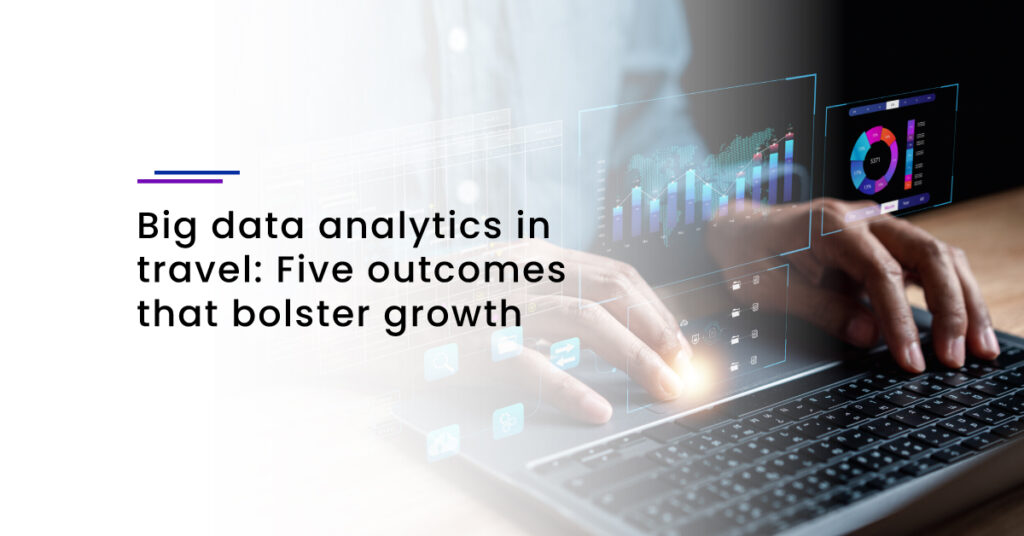
The use of big data analytics can single-handedly lift any organization’s operations capability, provide competitive advantages, and highlight new business opportunities. As per a recent study, the global market for big data analytics is expected to reach $103 billion by 2027, with a compound annual growth rate of 11.7% between 2020 and 2027. The numbers suggest the effectiveness of implementing big data analytics. The hospitality industry is also one of its beneficiaries. Big data analytics has become an increasingly important tool for businesses in the travel industry. Travelers leave a lot of data in their pursuit of finding the right travel products. It includes searching for destinations, flights, and hotels. And even during the travel, they leave a long trail of data sets. All this data and the data from involuntary sources are used for predictive analysis, learning trends, and fixing persisting issues. So here in this article, we’ll explain how big data analytics makes business sense for the hospitality industry. We will also highlight five key outcomes. But before we go there. Let’s first understand how this data is analyzed. How is the big data analyzed? Collecting all the open source and the data coming from third-party sources itself is a demanding task. Then, analyzing and extrapolating this data to put it to use is an even mightier ask. That is when the analytics part comes into play. It collects data from all the sources, organizes and segments it into various parts to make sense of it. Big data cannot be processed and analyzed manually. The analytics platforms use modern technologies to extract valuable and actionable insights for businesses. Also, do predictive analysis,as we highlighted earlier, to identify the upcoming trends in a particular industry. Watch the following video to understand how predictive analytics work: Now, let’s narrow our focus to the travel industry and how it benefits from big data analysis. We have identified five outcomes of using BDA that promote growth. Read on! The travel industry can benefit immensely from big data analytics. By analyzing large amounts of data, travel companies can gain valuable insights into customer preferences, behaviors, and needs, leading to a wide range of benefits. Here, we outline five crucial outcomes of employing the learnings of BDA in travel businesses. #1 Improved guest experience One of the most meaningful benefits of using big data analytics in the travel industry is improved customer experiences. By analyzing customer preferences and behaviors, travel companies can tailor their services and offers to better meet their customers’ needs. For example, a hotel might use data analysis to determine which amenities are most important to its guests and use that information to improve its offering and provide a better guest experience. #2 Better upselling opportunities Big data analytics can also help travel companies increase their revenue. Companies can identify opportunities to upsell and cross-sell products and services by analyzing data on customer spending habits. Such as, a travel agency might use data analysis to identify customers who are likely to be interested in purchasing travel insurance and offer it to them at the time of booking. This can help the agency increase its revenue and improve its bottom line. #3 Effective marketing Big data analytics is also helpful in creating more targeted marketing campaigns. With the data on customer demographics and preferences, travel companies can develop targeted messaging and positioning strategies that are more likely to resonate with their audience. For instance, a cruise line might use data analysis to identify customers interested in family-friendly activities and create a marketing campaign focusing on those features. This can help the cruise line reach the right customers with the right messages, leading to higher conversion rates and more effective marketing spending. #4 Better operation efficiency Using the data on internal processes and operations, companies can identify areas for improvement and make changes to increase efficiency. For example, a hotel might use data analysis to determine which check-in processes take the longest and implement changes to streamline those processes. This can help the hotel reduce costs and improve the overall efficiency of its operations. #5 Active risk mitigation Big data analytics is an excellent tool for managing risks. With quality data on customer behaviors and trends, companies can identify potential risks and take steps to mitigate them. Like, a travel agency might use data analysis to identify a possible trend of cancellations for a particular destination and take steps to manage that risk, such as offering alternative destinations or refunding. This can help the agency avoid potential problems and ensure a smooth and successful travel experience for its customers. Overall, big data analytics in the travel industry offers many benefits that bolster growth, from improved customer experiences to increased revenue and enhanced operational efficiency. By leveraging the power of data analysis, travel companies can gain valuable consumer insights to help them better serve their prospective customers and improve their bottom line. Vervotech is a leading Hotel Mapping and Room Mapping API that leverages the power of AI and ML to quickly and accurately identify each property listing through the verification of multiple parameters. With One of the industry’s best coverage of 98% and an accuracy of 99.999%, Vervotech is quickly becoming the mapping software of choice for all leading global companies operating in the travel and hospitality industry. To learn more about Vervotech and the ways it can enhance your business in the long run contact us: sales@vervotech.com
How does a conversational AI Chatbot work? Use cases in Travel
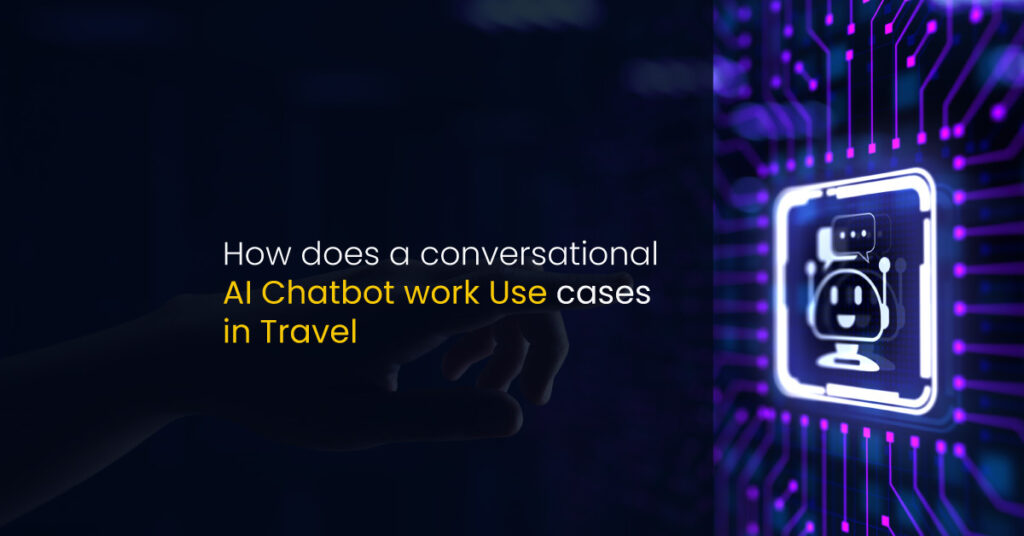
Travel & accommodation is a highly customer-facing industry. At the same time, the volume of travelers is big and traveler expectations are bigger. As many as 100,000 flights take off every day, carrying about 6 million passengers. In short, it’s not a mean task to serve a satisfactory customer experience in an industry as dynamic as travel. Therefore, in the travel industry, there was always a pressing need for automation in customer service. Conversational AI chatbots are greatly serving the travel industry in automating customer service functions. Here, in this article, we will discuss how the whole technology of conversational AI and the bots running on it work. Also, explore emerging and popular use cases of technology in the travel industry for chatbots. How does a conversational AI chatbot work? Think of a conversational AI chatbot as a computer program that can have conversations with human beings. It is usually programmed to answer questions, but it can also be programmed to carry out tasks. The purpose of a conversational AI chatbot is to simulate human-to-human interaction as closely as possible in order to provide the most efficient and effective customer service. It reduces the burden on human customer support executives, they can direct their energies to questions that are more critical and necessarily require human intervention. The travel businesses are now increasingly employing conversational AI chatbots and voice bots to address customers’ queries. Many are calling them “Robo Travel Advisors.” They are helping customers through their journey and becoming end-to-end assistants. Top benefits of using AI travel chatbots Like other travel businesses, conversational AI chatbots can also provide impetus to your customer service efforts. Still, have doubts? Let us declutter them by exploring the top benefits of implementing AI chatbots in travel. Reservation Assistance When customers initiate a booking and shop around options, they tend to develop doubts in their minds. So, the whole journey from interest to finally making a booking decision at many junctures mandates them to interact with either a customer support executive or write to your travel portal. That’s when the function of AI chatbots comes, you know your offerings, and you know the possible apprehensions of travelers. You can train your chatbot with the required information and have your AI chatbot work as an efficient reservation assistant. Booking Manager The conversational AI chatbots today can communicate and respond to travelers with all the necessary information in a similar tone using natural language processing. Moreover, chatbots can make real-time booking modifications, like rescheduling, canceling, or processing refund requests. Also, keep customers updated in scenarios like flight delays due to sudden weather changes, last-minute booking modification requests, and all other dynamic travel requests. So, your AI chatbot can work as a booking manager and deliver quality customer experience across customer touchpoints. Round-the-clock engagement and personalization Travel is a dynamic industry. Customers often need instant help, even if they are in different time zones. AI chatbots can be available 24*7 *365 days a year. Constant availability of customer support enhances the customer experience. As per a Deloitte survey, 92% of the brands see customer experience as a differentiator. Also, the conversation AI chatbot can offer personalized recommendations while helping the customers, creating additional revenue opportunities for your travel business. Data and feedback mechanism AI chatbots also offer a great degree of convenience to customers; they can easily track the communication and access the data they have shared in the chat, especially in cases that require continuous follow-ups. Also, this data is nothing less than a treasure if you look at it in a business sense. You can use the data to create a concrete feedback mechanism. And conduct market research on how your products and services are performing largely. Also, based on conversations, you can offer personalized offerings to your customers. Resolving vague questions Customers do not always ask straight, corrigible questions. With the help of NLP (natural language processing), AI chatbots can make sense of vague queries like “beach la party” or “music live hotel.” The bot identifies the triggered words and searches for the customer’s query to display the best answer. Recommended: Five Ways To Measure The Effectiveness Of Hotel Chatbot Conclusion! The conversational AI chatbots enhance the overall customer experience. And in an industry like travel, the volume of routine queries is larger than unique ones. At times travelers just want to know luggage requirements or room policies. Therefore, AI Chatbots can be a sustainable, affordable ally to your customer service efforts. You can have a leaner customer service staff that caters to queries requiring human involvement.
40+ Different Hotel Content Attributes That Users Check Before Booking a Hotel
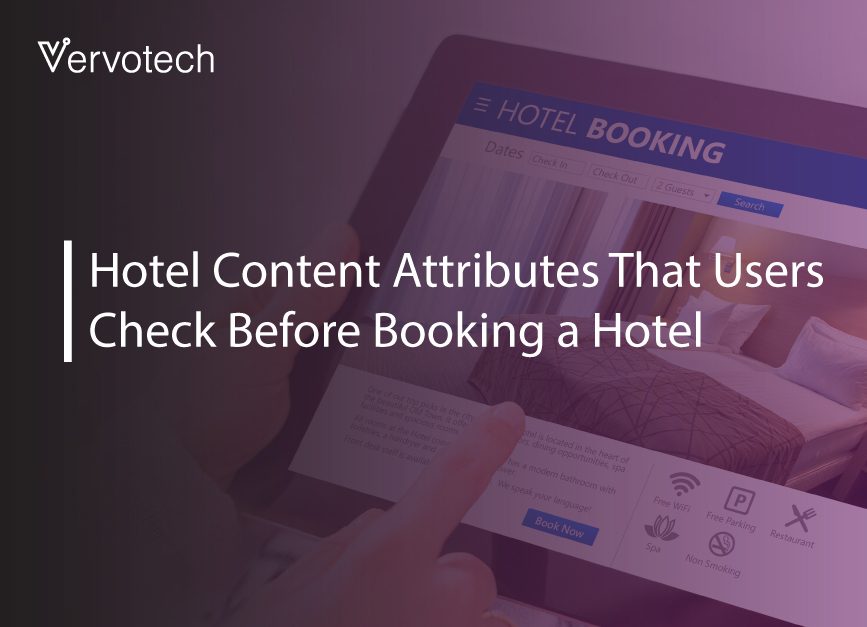
At a time when the majority of hotels are booked online, consumers try to find answers to their questions – what’s the pet policy, if smoking allowed or not, what are the pool hours, is there an in house restaurant – the information is nothing but hotel content and it should be accessible in minimal time because it takes only milliseconds for a user to switch to another website. While losing customers to competition because of operational inefficiency is something that you’d never want as an online travel business. Then, how to solve this conundrum? Can widening the set of attributes you display on your website solve this? Let’s find out! When the range of questions coming from consumers is widening, the set of answers you provide on your website should also widen. Although it’s understandable that data coming from multiple distribution channels is too cluttered to be displayed on websites. And keeping the hotel content data up to date all the time is another big challenge. To solve all the issues mentioned above on one platform, you need a dedicated master tool. A tool that maps the maximum number of attributes, so you can answer maximum customer queries upfront. There are Hotel Curated Content tools in the market that map up to 40+ attributes, allowing travel businesses to create sustainable travel businesses. These tools mostly run on AI/ML algorithms and keep your hotel content up-to-date with minimal human intervention. This empowers you to tell your best story to your potential customers. Now, let’s have a deeper look at how these 40+ hotel content attributes take form once mapped by a hotel curated content tool: Hotel Name: Online travel businesses work with multiple suppliers, and too often they end up mixing the hotel names, which creeps doubt into customer’s mind, and results in canceled or missed bookings. Top mapping tools use AI/ML algorithms to find out the correct name of the hotel and help you list accurate hotel names on your website. Property Type: Giving the consumer clarity about Hotel property types, such as – Motel, Resort, Villa, etc. attracts more customers, because when customers come online to book a hotel, they already have a property type in mind, if they don’t get the matching property or not enough clarity about the property type, they are likely to leave your hotel listing. Images: When it comes to hotel booking, images are key decision drivers. Hotel Curated Content tools provide image content through its network of exclusive hotel media content providers to make your hotel content completely ready for listing. Star Rating: With more customers going online, putting across their opinions on their travel experiences, star rating becomes very critical to establish the legitimacy and the quality of a property. Products like Hotel Curated Content map star ratings and provide strong social proof to properties. Email: To facilitate a smooth post-booking experience a Property’s email address is a very crucial denominator. There are scenarios when a user wants to connect directly to the hotel with their special requests, email addresses come very handy in those situations. Curated Content Tools accurately extract email addresses of properties from your suppliers’ data and add them to your hotel content. Geocodes: At a time when everyone owning a smartphone has access to GPS technology, not providing accurate geocodes can be very counterproductive for any travel business. Curated Content Tools add accurate geocodes to your hotel content by leveraging highly efficient AI/ML algorithms. Address Line1: Usually property addresses have two lines, to avoid any missing important address data, the hotel content mapping tools capture the full address in its natural form and list the first line of address in Line 1. Address Line2: Detailed location information of a property comes in Line 2 of the address. Country Code: HMC Tools map Country Codes provided by the International Organization for Standardization to avoid mix and match of country names in the content. Supplier Name: When you take services of multiple suppliers, you must know the name of the supplier providing that hotel. Supplier Hotel Id: You get access to a consolidated list of property IDs provided to you by your suppliers. Recommended: Hotel Data Duplication: How To Solve The Growing Challenge For Hospitality Industry City Name: Name of the city where the property is located. State Name: Name of the state where the property is located. State Code: Code of the state where the property is located. Zip Code: Zip Code of the area where the property is located. Country Name: Name of the country where the property is located. Latitudes and Longitudes: Latitude and Longitude of the property to get precise direction and location of the property. Phones: Property’s phone numbers. Fax: Property’s fax number. Website: Property’s official website address. As Hotel Content plays a very crucial role in the booking process, with a quality Hotel Curated Content tool, you can easily list all the aforementioned attributes properly on your travel website. And put your travel business in a position that allows you to present your best story to your potential customers, and also take your conversion numbers up north. Vervotech is a leading Hotel Mapping and Room Mapping API that leverages the power of AI and ML to quickly and accurately identify each property listing through the verification of multiple parameters. With One of the industry’s best coverage of 98% and an accuracy of 99.999%, Vervotech is quickly becoming the mapping software of choice for all leading global companies operating in the travel and hospitality industry. To learn more about Vervotech and the ways it can enhance your business in the long run contact us: sales@vervotech.com
Five ways to measure the effectiveness of hotel chatbot
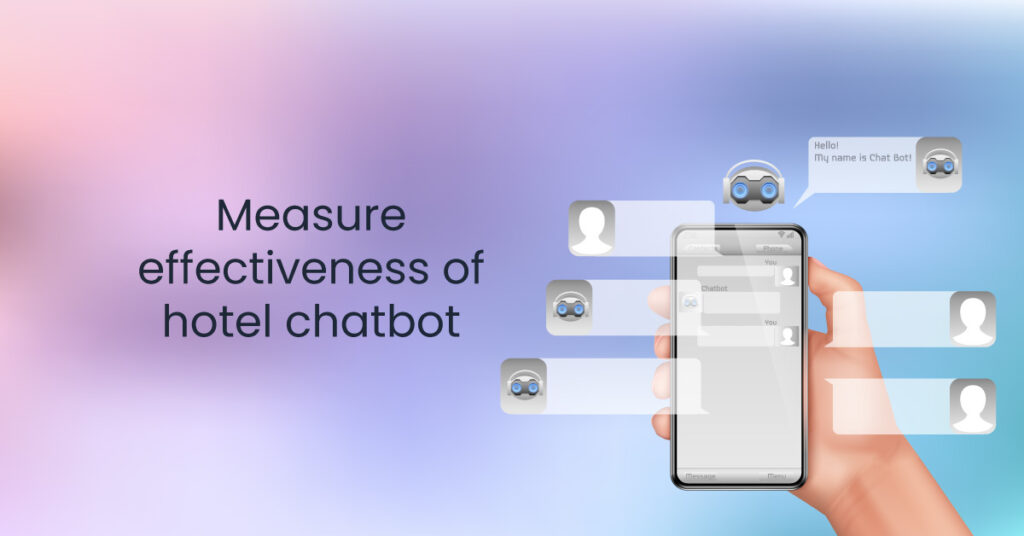
Key players in the accommodation industry are now increasingly using hotel chatbots powered by AI and NLP (Natural Language Processing) as digital customer service agents and for answering regular to critical customer questions. Here in this article, we’ll discuss how to measure these hotel chatbots’ effectiveness. “Thinking about the bot as a front-end representative of your product or service can make a lot of sense and having a delightful bot that provides a useful service can generate a strong attachment to your brand.” Amir Shevat Designing Bots: Creating Conversational Experiences Integration of hotel chatbot into business strategy reduces unwarranted pressure on human resources to answer customer queries that are either repetitive or frequently asked. But how do you know if your chatbot implementation is working? You need to have some yardstick to measure its success or failure. Right? You are reading this article means you are already using or thinking of hotel chatbots. No worries. Here in this piece, we’ll look at some tried and tested methods to measure the effectiveness of hotel chatbots. Five Key indicators to assess the performance of hotel chatbot Measuring and analyzing the correct performance indicators of your hotel chatbot will help you evaluate its actual ability to handle crucial customer conversations. Also, you will be able to gauge how and when you can implement your chat in your other business processes. There are loads of KPIs that you can measure. Here in this article, we will assess five key performance indicators crucial for the success of chatbots in the accommodation industry. So, let’s look at them one by one. 1. Conversation Success While assessing the performance of your hotel chatbot, the first indicator you should look at is the conversation success rate. If too many customers leave the chat unsatisfied, your bot needs tweaking. Issues could be anywhere between its placement or its ability to lead conversational interactions. It’s true that some issues mandatorily require human interaction. Yet you need to find out if users’ requests are correctly processed, e.g., If the interaction demands human interaction, is your hotel chatbot triggering a live agent at the correct time? These are the variables that you need to analyze while determining the conversation success of your hotel chatbot. However, the output of your chatbot is a summation of the information put in its database. So, to achieve better success, you need to broaden your database constantly. With a broader database, AI and NLP will be able to produce more quality output for your customers, and over time you will observe a better conversation success rate. 2. Bot Sessions It is an excellent metric for rule-based hotel chatbots to understand how much time your bot is taking to produce the desired results your users are seeking. The metric counts the total number of interactions sent and received. A lower bot session means the user is getting its query resolved in minimum steps and vice versa. Therefore, learning is simple; you always need to keep a close eye on “bot sessions.” At times, users leave a chat thinking a bot cannot solve their queries. If “bot sessions” are too low, you can observe random conversations and make sure your conversation success rate is going in the right direction. 3. Bounce rate The success of a hotel chatbot is co-related with the success of your website. If your users leave your website without even visiting your hotel chatbot, your bounce rate is high. And your chatbot is not even coming into the play. In cases of high bounce rate, the design, the content, the speed of your website, etc., everything comes under the scanner, and you need to work on these elements to reduce bounce rate. 4. Fallback Rate No chatbot is foolproof. No matter how broad your database is, it will not be able to satisfy 100 percent of consumers. That’s why you need to check your chatbot’s fallback rate. The fallback rate is nothing but the percentage value of the times your hotel chatbot fails to satisfy customer queries. The metric will give you numeric insights into the instances your bot could not understand customer requests. 5. Customer Satisfaction Ratings Customer satisfaction is pivotal to driving business growth. To measure how satisfied your customers are with your hotel chatbot, you can put in simple yes or no type questions. Also, you can ask visitors to rate conversations before they exit your bot. You can use these ratings as a yardstick to measure customer satisfaction. Recommended: How does a conversational AI Chatbot work? Use cases in Travel As technologies like AI and NLP are evolving, the overall prowess of chatbots is also increasing. Still, they are not yet 100 percent, and they still need human intervention. If you can keep a check on the variables we discussed in this piece, you will be able to use your hotel chatbot more effectively and achieve a greater conversation success rate.
Maximizing the Benefits of Hotel Business Intelligence
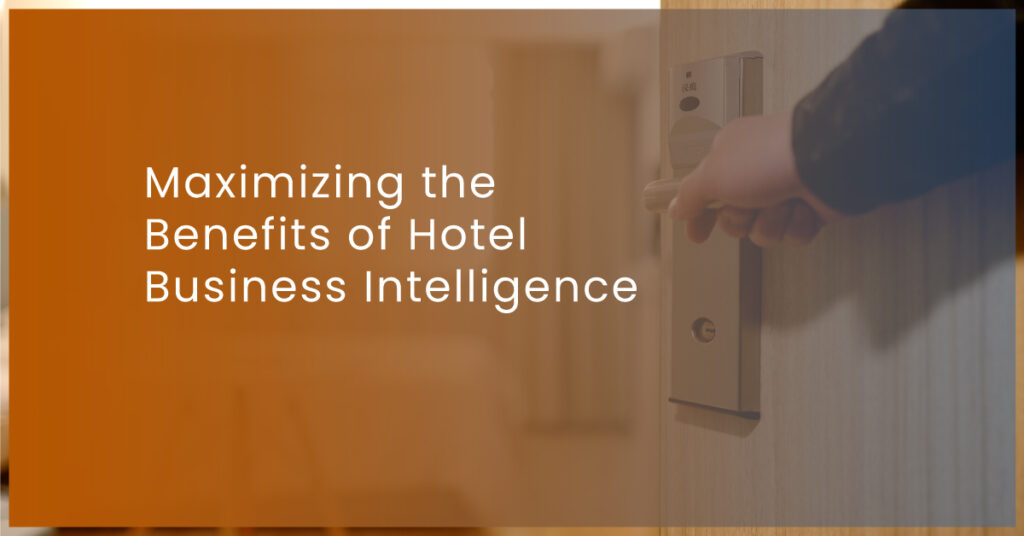
The hotel industry constantly evolves, with new technologies, trends, and competition arising daily in every nook and corner. In order to stay ahead of the game, hoteliers need to be able to make data-driven decisions based on accurate, up-to-date information. It is where hotel business intelligence comes into the picture. Business intelligence, or BI, refers to the use of various technologies, applications, and processes to gather, integrate, analyze, and present data from multiple sources. By utilizing BI, hotels can gain valuable insights into their operations, performance, and market trends, which can help them to improve efficiency, increase revenue, and gain a competitive edge. In this article, we present you a method to approach hotel business intelligence that will help you maximize its benefits. To make it easier for you, we dissect it into three parts, understanding, analysis, and action on business data. Let’s have a look! 1. Understanding the available data The first step in using hotel business intelligence is understanding the data that is available to you. This data can come from a variety of sources, including: Property management systems (PMS) Point-of-sale systems (POS) Booking stats from Customer relationship management (CRM) systems Social media and online review sites Market research and industry reports In order to fully leverage the power of BI, hotels need to be able to integrate data from all of these sources and analyze it in a meaningful way. This requires a solid understanding of the data and the ability to clean and prepare it for analysis. Time and money are your scarcest resources. You want to make sure you’re allocating them to the highest-impact areas. Data reveals impact, and with data, you can bring more science to your decisions.” – Matt Trifiro, CMO, Vapor IO. 2. Finding actionable insights Once you understand the data well, the next step is to analyze it and turn it into actionable insights. This is where the power of BI really comes into play. There are a variety of tools and techniques that can be used to analyze and visualize data, including: Hospitality Reporting and Analytics: It allows hoteliers to see key metrics and performance indicators at a glance and drill down into the data for more detailed analysis. Data mining and modeling: These techniques can help hotels to identify patterns and trends in the data, such as which types of guests are most likely to book a room or which revenue streams are most profitable. Machine learning models: This can be used to predict future trends and patterns, such as how occupancy rates are likely to change in the future or which marketing campaigns are most likely to be successful. 3. Putting data into action The final step is to implement the insights gained from the data and act on them. It includes: Automating tasks and processes: By using data to identify areas where automation can improve efficiency, hotels can save time and money while enhancing the guest experience. Targeted marketing: By using data to segment their customer base and understand their preferences, hotels can create more effective and targeted marketing campaigns that drive more bookings and revenue. Optimizing pricing: By analyzing data on occupancy rates, demand, and competition, hotels can optimize their room pricing to maximize revenue. In this article so far, we have discussed the benefits of using business intelligence (BI) in the hotel industry and the steps that hotels can take to maximize those benefits. While there’s one more step which is equally important that is selecting the right BI tool. With so many options available, it can be difficult to know which tools are the best fit for your hotel. To help you in your search, we have compiled a list of the top five hotel BI tools that we recommend: Oracle Hospitality Reporting and Analytics: This tool allows hotels to collect, integrate, and analyze data from various sources, including property management systems (PMS) and point-of-sale systems (POS). It also offers a variety of customizable reports and dashboards, as well as advanced data mining and modeling capabilities. STR: The STR provides hotels with market data, competitive intelligence and trend analysis, STR’s data helps hotels to benchmark their performance against industry averages, analyze market trends and make informed business decisions. Tableau: Tableau is a powerful data visualization tool that can help hotels to analyze and present data in an intuitive and interactive way. With Tableau, hotels can create interactive dashboards, reports, and visualizations that provide valuable insights into their operations and performance. Duetto: This cloud-based solution allows hotels to analyze and optimize pricing, demand, and revenue. Duetto’s technology allows hotels to identify patterns and trends in their data, and to create dynamic pricing and revenue management strategies to increase bookings and revenue. Rainmaker: Rainmaker’s revenue management system is cloud-based software that enables hotels to optimize pricing and revenue. It also provides forecasting, budgeting, and performance management features to help hotels make better-informed decisions. These are just a few of the many hotels BI tools that are available on the market. It is important to keep in mind that every hotel is unique and has its own set of needs and goals. Therefore, it is important for hotels to evaluate the different BI tools available and determine which one best fits their specific needs. Hotel business intelligence is pivotal for hotel chains and individual hotels looking to improve efficiency, increase revenue, and be on top of the competition’s movements. Hotels can be proactive and continuously improve by understanding and leveraging data, analyzing and visualizing it, and implementing the insights gained from business intelligence tools. The industry is constantly evolving, and BI is a way to keep up, stay ahead in the game, and drive growth with better visibility of business processes. Vervotech is a leading Hotel Mapping and Room Mapping API that leverages the power of AI and ML to quickly and accurately identify each property listing through the verification of multiple parameters. With One of the industry’s best coverage of 98% and an accuracy of 99.999%, Vervotech
7 factors to choose the right hotel mapping provider for your travel business
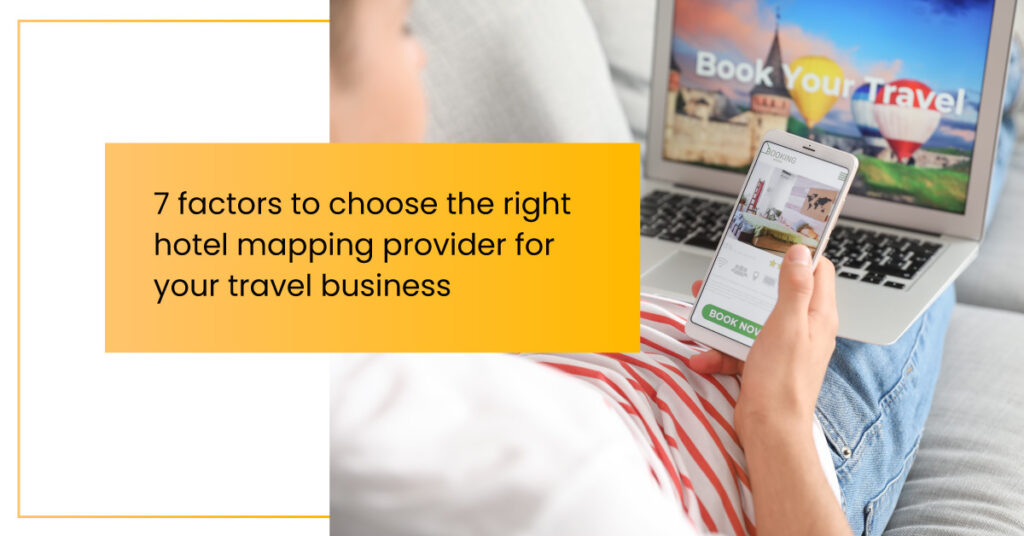
Picking the right hotel mapping provider has become a necessity for every travel business. Since most travel companies rely on a multi-supplier strategy for sourcing accommodations, there is a possibility to have duplicate data on your platform. Hotel mapping removes duplicate and inconsistent hotel data and enhances the customer booking experience. While you can rely on your in-house team (which can be costly, and complex), there are mapping experts that can take away the complexities and let you focus on your critical business functions. So how do you choose a hotel mapping provider? Let’s get started. 7 Evaluation Criteria When Choosing Hotel Mapping Vendor Once you have decided to outsource a hotel mapping provider, you will want to evaluate the options different providers offer and look at how they would support your business goals. Here are seven primary evaluation criteria for selecting a mapping vendor. 1. Customer Support Commitment to customer success should be an important parameter to look for. Software projects with the newest technologies such as natural language processing (NLP), machine learning might encounter unanticipated challenges. Since most mapping providers offer automated and advanced technology-based mapping solutions, it is important they have a quick turnaround time on escalations. Ask questions to your mapping provider about What is their response time for queries? What form of support will you have access to, such as if you would get chat-based support or access to a dedicated resource. Accuracy Accuracy is another essential parameter when vetting hotel mapping providers. Inaccurate mapping can lead to bad mapping, which can cost travel firms revenue loss if customers cancel their reservations owing to bad mapping. An ideal hotel mapping provider must offer the highest level of accuracy in terms of accurately mapping the data that will help every travel business to develop a customer-centric platform. Various hotel mapping providers leverage the latest technology such as AI, machine learning, and natural language processing (NLP), which ensures unmatched accuracy. 3. Mapping Percentage Next factor to consider is mapping percentage, which means how much hotel data gets mapped by your hotel mapping provider. A travel agency must vet the mapping provider based on this factor and check if they map 100% of the hotel data given by the supplier or Bed Banks. For example, if your hotel supplier is Expedia, then your mapping provider should map 100% of hotels from Expedia across other suppliers for you. 4. Coverage Consumers love options, and travel agencies work with multiple suppliers to offer a plethora of hotels to their customers. So, the next factor to focus on is mapping coverage. You must vet your mapping provider on how many suppliers do they have already integrated within their platform. You have partnered with the right hotel mapping provider if they cover and map all the hotels given by the suppliers. 5. Reliability Next important criteria to vet for is how reliable is your hotel mapping provider. While most SaaS businesses claim to deliver high-quality services or products, it is important to assess through their existing client feedback. Reach out to the vendor’s customers and ask questions- How long have they been their client? How responsive is their customer service team? How has the provider addressed their queries and needs? Collaborate with a provider with a proven track record and read about their customer success stories, testimonials, and reviews. You definitely don’t want to work with a business whose software is slow, buggy or has security issues. 6. Speed It would be best if you evaluated a hotel mapping provider on how fast they can deliver accurately mapped hotels and rooms. The faster the mapped properties, the quicker you can start selling them. This will also directly impact your customer booking experience, as your customers will get the freshest, up-to-date hotel data on your platform. Look for a hotel mapping provider that can deliver mapped content at the earliest (say 1-2 days) without compromising quality. 7. Ease of integration In addition to making your product readily accessible, it’s equally important to ensure that your mapping API can be easily integrated into booking engines quickly and efficiently. Focus on making more integration options available to your customers, research the issues they face while integrating your product and try to ease out their pain points. A hotel mapping vendor is essential for every size travel company that wants to stay agile and avoid investing in large amounts of capital for advanced technology like AI and machine learning. If you are in the process of choosing a hotel mapping vendor for your business, thoroughly vet prospective providers using the key factors mentioned above. The right hotel mapping provider can bring an impactful business change to your company and help you focus on what matters the most- your customers.
Five Ways World Travel and Tourism Industry Digitalizing Journeys
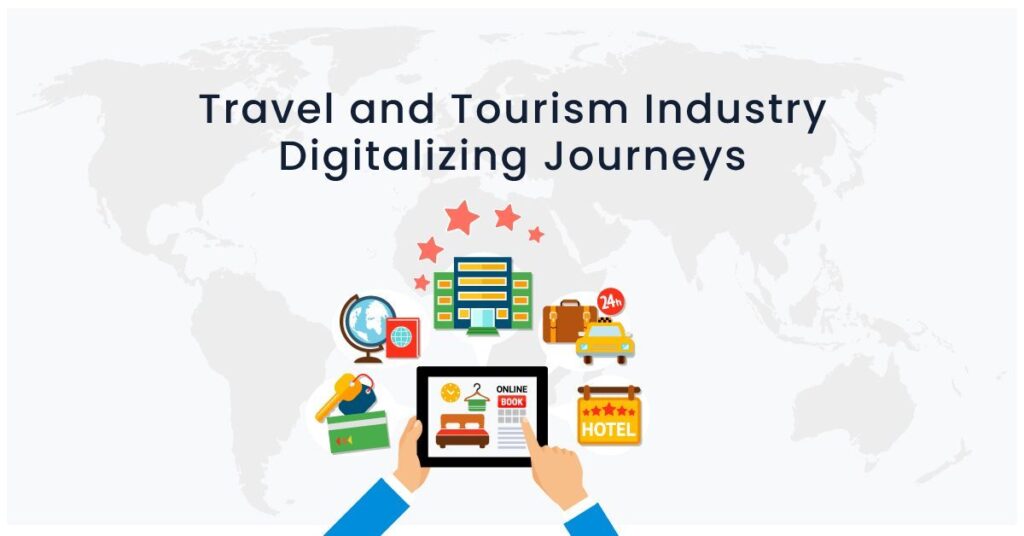
It’s a fact that the pandemic completely stalled the world travel and tourism industry at one point. However, if you look back now, when the impact of the virus is subsiding, people are getting used to living with it, the temporary setback offered more than it took to the travel industry, especially airlines across the world. The experience made the travel industry realize the importance of digitalization and modern tech to facilitate journeys. Today, airlines worldwide are promoting contactless journeys because it’s imperative for the industry to bring back the lost confidence in the passenger. “Every CEO that I speak to agrees about accelerating digital strategies,” – MD, Travel and Transport, IBM. While passengers today expect a more seamless travel experience from the airlines. In a survey, IATA recorded 10,408 passengers’ responses from 145 countries. And the insights were astonishing in terms of what passengers expect from the fliers. As many as 65% of respondents were willing to share personal data for expedited security checks. About 70% of passengers favored self-service baggage check-ins. Also, the survey showed the passengers wanted real-time information throughout their journey, 82% wanted real-time flight status on their phone, and about half of the respondents favored getting the real-time status of their baggage. Therefore, the World Travel and Tourism industry is willing to digitize journeys, and the expectations from the travelers are also in public. Then, let’s have a deeper look at what the industry is doing to bring technology into travel. Five Ways World Travel and Tourism Industry Enabling Seamless Travel Through Digitalization The world travel and tourism industry is gradually reeling from the bumps of the pandemic. And navigating through the realities of the day is not easy – the “new normal” is new for the travel industry as well. There’s no precedent for taking reference from and dealing with it. That said, modern technologies are helping the travel industry a big way to get the ball rolling again. So, now, we look at five major ways world travel and the tourism industry, particularly airlines, deploy modern tech to ensure efficient and safe journeys. #1 Increased Passenger Experience with Virtual and Augmented Reality The likes of Air New Zealand and Pratt & Whitney are pumping massive money into AR/VR systems to provide a better in-flight experience to passengers. Air New Zealand partnered with Microsoft Hololens to identify passenger mood and similar details. The information helps cabin crew offer more personalized offerings to traveling passengers. On the other hand, some carriers are also offering in-flight virtual tours before arrival. And using VR for cabin crew training. Recommended: Five Emerging Technology Trends in Travel Industry #2 Efficient Security Checks with Artificial Intelligence Against the backdrop of more stringent rules and covid protocols, airports are using AI to speed up security check operations and offer passengers a better traveling experience. Not just the carriers, governments worldwide are also investing heavily in AI security systems. In the previous financial year, the UK government pumped 1.8 million Euros to build new AI security systems, which bolster security and reduce passengers’ wait time. #3 Internet of Things for Improved Airport Experience The airlines are now gradually understanding the customer experience is the primary variable that gives them a competitive advantage. And at a time when the travel industry is on the path of recovery from the chaos of the pandemic, it becomes more critical. Airlines are now increasingly employing beacon technology for better to and fro communication from carrier to flier. The beacon technology assists passengers throughout their time at the airport, from providing nearby promotional offers, the status of security check, updated time of departure to minor things like informing the passenger of the correct gate number. #4 Passenger Assistance with Robotics Airports are using robots to fill the gap between human assistance and digital solutions. One such example is Indianapolis International Airport, which in partnership with Double Robotics, offers a “web-cam on wheels” for special ability passengers. The camera directly connects to the human assistant through a video link to resolve passenger challenges. Fliers are also using robots as “dynamic environment analyzers.” Indira Gandhi International Airport, New Delhi, uses a robotic technology called RADA by Tata labs to disseminate information like departure gates, weather at the destination, and flight status by simple boarding pass scan. Recommended: Is Bliesure the Future of Post Pandemic Business Travel? #5 Personalised Customer Offerings with Wearables and IoT Along with the demand for a seamless travel experience, customer expectations are also evolving. With an increasing number of customers who use wearables and are connected by IoT, fliers can use data to offer more centralized and personalized offerings to passengers. Some airports are already using IoT to push luggage information to passenger’s smartphones. As mentioned earlier, most passengers today are willing to trade personal data for getting seamless travel experience. Modern technologies are playing a significant role in bringing back passengers’ confidence, severely hit by the pandemic, and following protocols. And with the digitalization of journeys, the world travel and tourism industry looks poised for a strong recovery.


